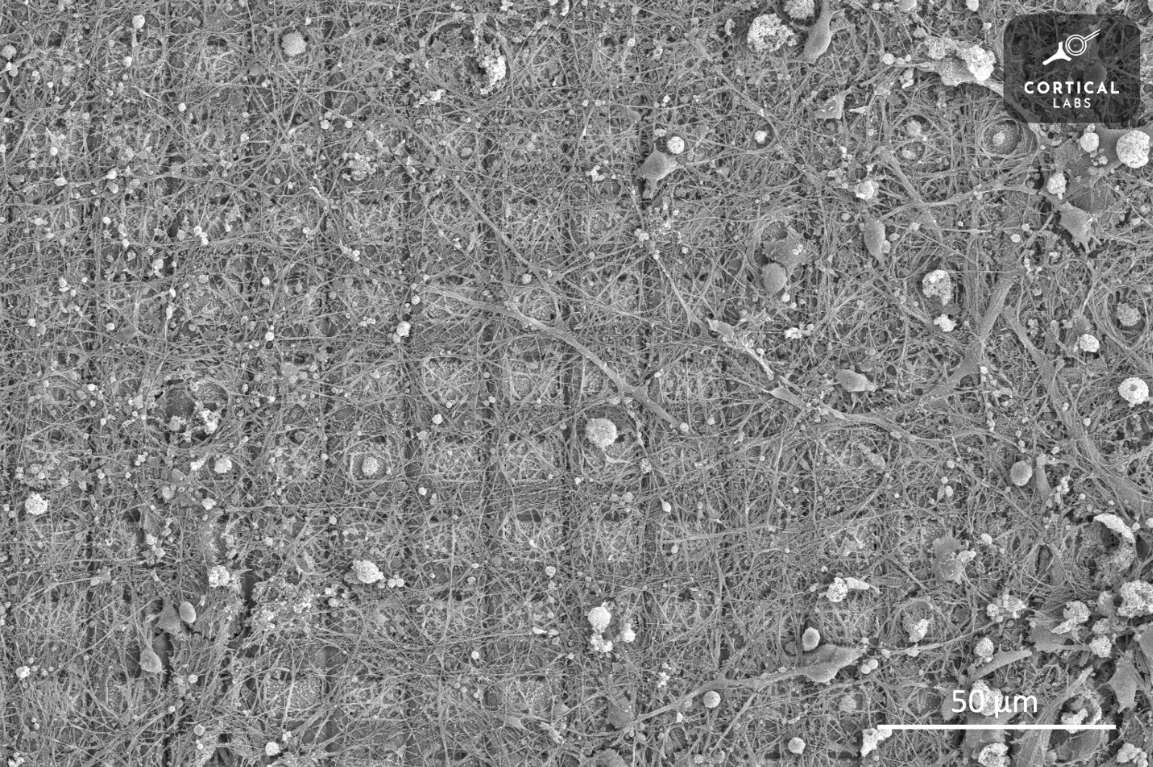
If you think the latest burst in AI development is an exotic state of computing — with its big, buzzy acronyms like Large Language Model (LLM), Generative Adversarial Network (GAN), and more — think again. It hardly gets more exotic than human brain cells that can interface with electronics — and AI agents — whilst floating in a Petri dish. Yet that's exactly what an Australian team, associated with Monash University and Cortical Labs, achieved last year when they introduced their DishBrain concept.
Apparently, the concept and promise of the team's work struck a chord with the military and its attractiveness as a research venue even has a dollar value attached — thanks to a US $407,000 military investment into the research courtesy of Australia's ONI (Office of National Intelligence).
While introducing DishBrain last year, the researchers described a semi-biological processing unit, architected from a mix of human and mice brain cells grown into control electrodes. These electrodes served as a sort of BCI (Brain-Computer Interface), allowing scientists to send control signals and to read the biological "protobrain" activity. Interestingly (your adjective may vary), DishBrain demonstrated something akin to sentience (well, more like basic survival skills, or the biological imperative of minimizing negative feedback) within 5 minutes of it being turned on: that was the amount of time it needed to "learn" how to play Pong.
The way they managed to "train" the brain was nothing short of ingenious: the ball's movement was transmitted to the cells through the electrodes, with the electrical stimulation of DishBrain's cells impacting different areas mapped against the location of the ball. Then, DishBrain was given control of the paddles and the ability to move them left and right.
Because biological systems tend towards the lowest energy expenditure possible (or, at least, to avoid costly or negative experiences that subtract from its energy reserves — and thus its survivability), DishBrain was set up for a simple reward system that exploited this: if the paddle intercepted the ball, the electrodes in BrainDish would give it a "positive," predictable, one-second-length electrical stimulus. But whenever the paddles missed the ball, DishBrain received an unpredictable burst of electricity that lasted up to four seconds. Sentience, in this case, was achieved via survivability: it takes more energy to cope with an unpredictable four-second burst than it does for a predictable, one-second one. So DishBain increased its survivability by actively maximizing the number of times the paddles hit the ball.


If this conjures an image of an electrical baton being pressed against someone in order to coax a certain behavior — well, you're not entirely wrong.
Associate professor Adeel Razi, with Turner Institute for Brain and Mental Health, said their work “merges the fields of artificial intelligence and synthetic biology to create programmable biological computing platforms”. That promise — to have the ultimate parallel processors (biological brains, or wetware) as computing devices — is the kicker. There's even an expectation that bio-processors such as these could eventually surpass the limits of conventional silicon chips, according to Razi.
It's interesting to note that the DishBrain project has some goals that are seemingly aligned with our current AI arms-race: much like AI companies such as Microsoft and OpenAI are running after the dream of recursive training (which essentially means that an AI agent can train itself), DishBrain's ability to learn by itself is the exact trophy those silicon and quantum-computing based companies (in the case of Microsoft) are pursuing. Whether that learning's based on a biomechanical and physics-based survival instinct or pure sentience is a relevant question, but the end result — that the system can learn by itself — is the same.
This ability in particular could have a profound impact on AI, as a processing system based on wetware instead of our current silicon-based approach could circumvent one of the biggest detriments to AI's evolution: the ability to remember training — or, in other words, the "catastrophic forgetting" that generally prevents AI from building upon its learning base.
According to Razi, the team "will be using this [the grant] to develop better AI machines that replicate the learning capacity of these biological neural networks.” Despite leading researchers being wary of the existential risks posed by AI, there's research going on that'd sound more likely in a science fiction context than in the news front of Tom's Hardware. The 2001 movie Down and its wetware-powered, sentient killer elevator comes to mind.
It's somewhat stressful to think of what could happen when the technology laid out in this article appears in something even more military-oriented — such as a drone system that elects to kill its human handler.
Luckily, only future versions of us will have to deal with that — if and when that moment comes.







